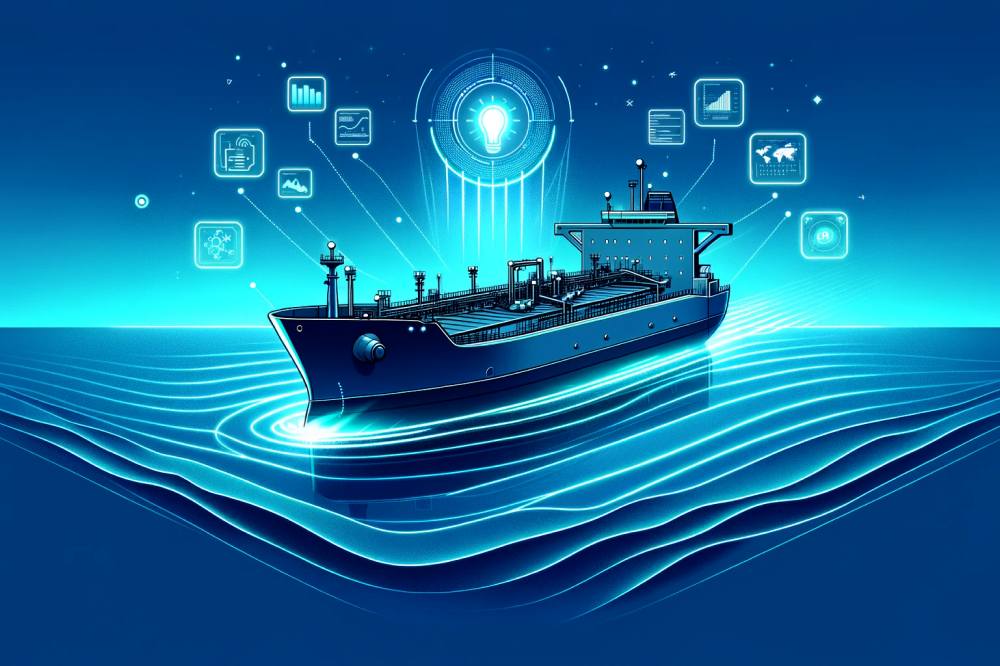
The power of maritime collaboration
The maritime industry is often regarded as traditional, and many reports and studies have all come to the same conclusion about the Maritime industry needs to define a data structure and data formats before benefitting from data sharing and collaboration.
However, the COVID-19 crisis and governmental lockdowns forced many of us to start working remotely and it also nudged digital strategies from talking to execution since we quickly needed to change the way we worked. So we are sure that the Covid-19 virus will change the industry’s image (to the better) and that we quickly will gain knowledge by looking into other industries and study how we organise our private life outside the office.
There are many years since researchers in Google told us that a successful cross-disciplinary collaborative team had everyone speak equally, either through a daily standup or weekly check-ins and by using a scrum framework. Overnight the scrum framework was the new “team thing”, but the team quickly learned there was no "one size fits all" in this theory either. Team routines have to be built and implemented by its members.
Many research papers have come to the same conclusion “who is on a team matters less than how the team members interact and view their contributions”.
The takeaways from successful collaboration teams seem to be:
- Make people more dependable
- Share knowledge across the company
- Invest in and retain people in your company and don’t lose them to another
- Work is important to people and they want to deliver with higher quality
CEO Magazine concludes that collaboration «to assembling a team with the right skills, capabilities, and attitude, supported by a group productivity platform from the talent pool across a range of strategic partners».
This is known from management theories and I believe everyone has experienced that great things might happen when we bring together people with different skills, capabilities, and experience, and we also know team collaboration can unlock several opportunities and benefits. However, even though I know the theory I have to admit I very often have come across many challenges while trying to get a team to work together:
Build trust and phycological safety for the employees
It all begins with establishing trust, and a study done by Laura Delizonna, at Stanford University highlights the importance of positive emotions because it allows us to foster cooperative relationships and solve complex problems. Positive emotions like trust, confidence, and inspiration broaden the mind and help us build relationships that promote trust. Without trust, you can’t implement any change. Software can’t establish trust among team members, this is a sole leadership issue.
Remember the change workflow resistance
Habits are our brain’s worst challenge since habits are our autopilot. Once we as individuals or as a part of a team makes a habit of working a certain way, it's hard to change as we are strongly linked to being productive. If we add people with different educations, personalities and skills, the team needs to develop a common language, so they understand each other. A developer and a business manager define efficiency differently and they also measure efficiency very differently.
Implementing a new software might help to change a team’s habit and help to define a common language, such software is often defined as project management or issue tracking software. However, the new software needs to deliver some immediate benefits if they intend to win the teams love and loyalty.
Lack of clear understanding of common goals and strategies
To keep everyone aligned with goals and clear expectations, teams end up resorting a never-ending meetings and discussions loop. It is a challenge to give everyone the clarity on the larger goals and to clarify what each team member's responsibilities are.
Combining industry software available cross platforms with team flexibility, fewer meetings, and implementing a new team framework might help to keep everyone aligned with goals and to set clear expectations.
Combining project management software and meeting organizing software such as the meeting application Decisions helps everyone in a team to better understand the overall goal and the strategy and to focus on their deliveries.
There are too much e-mails and information
Just a few years after the internet and e-mails entered the offices, everyone wanted to kill email, and they still do.
While most team members wishing they didn’t have to go through another bunch of email, we find managers sending one email after another and filling up our inboxes with “FWD: Re: Re: Important Update!”.
While it is important to keep every member of the team aligned and in sync, teams often forget that people working in offices need longer periods of uninterrupted time to do their best work.
Emails are time-consuming and today we know there is software much better fitted to organize communication and distribute information than e-mails software. Very often such software is referred to as platform software because the users can exchange data, communicate and collaborate more efficiently, and the information and data are stored to the project, building, vessel, voyage, etc, and it is easy for the organization to search for and find the relevant data, even though a team member has left the team or the organization.
A proposal for efficient Maritime collaboration on a chartering desk
Most of us have learned to use Microsoft Teams during the COVID lockdown which has become a corporate unified communication and collaboration platform that combines persistent workplace chat, video meetings, file storage (including collaboration on files), and application integration.
While Microsoft Teams serve your generic needs, Maritime Optima serves your industry needs. Combining the two software helps you to move from a “fragmented and silo-based value chain” regulated by existing software solutions to a “Digitalization and collaboration based” value chain. The combination of the two software helps your team reduce e-mails, improve your teamwork, and use selective sharing increased efficiency and less stress.
As a FREE user in Maritime Optima, you have access to more than 50 000 vessels and you will have a detailed overview of the supply side of the segment you are working with since we have organized the vessels into 8 main segments, each segment has sub-segments.

You will find a comprehensive “shipyard template" for each vessel and we have made it super easy for you and your team to edit and add technical information to any of the vessels. You can also add notes to a vessel, take or upload photos, upload drawings or documents. You can publish the data you add, keep it private or share it with your team and you have access to Maritime Optima and Microsoft Teams on your mobile devices.
While you are training your team using software applications available cross platforms and maybe exploring the opportunities combining Microsoft Team with Maritime Optima, we will continue to develop more modules and new features based on your feedback. Together we can develop a useful toolbox for your team at very affordable pricing which helps your teams be more efficient and have more fun.














